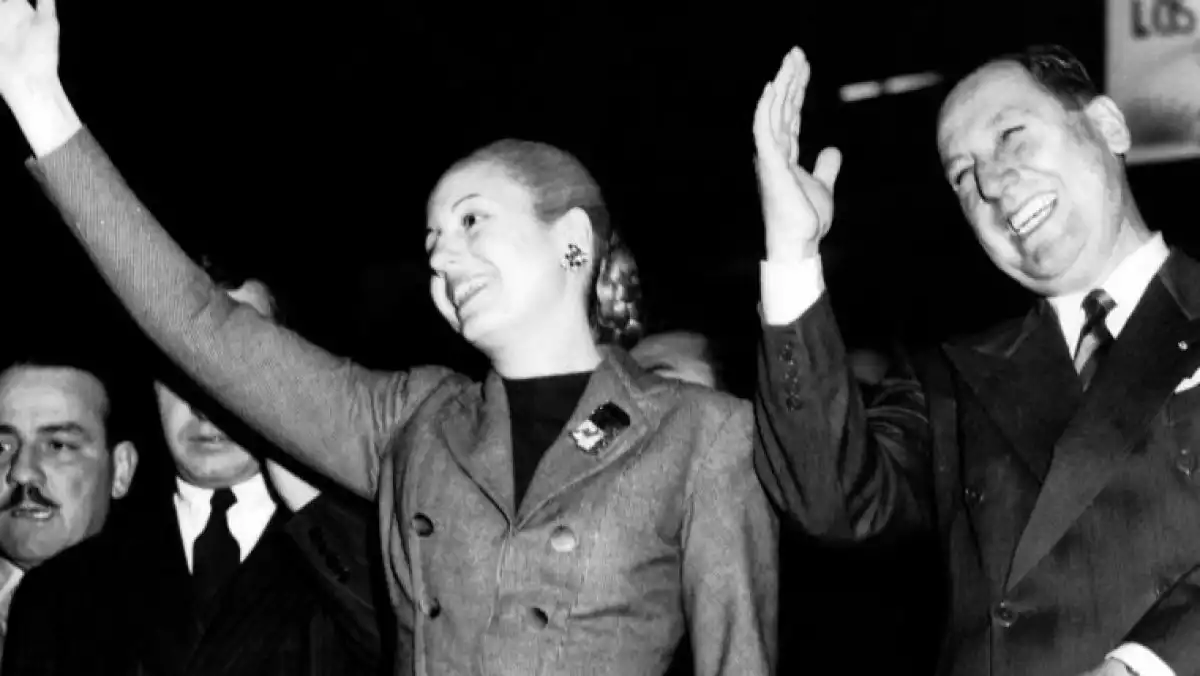
The 20th century produced a plethora of discoveries, and during the frenzy of medical advancements, Portuguese doctor Antonió Egas Moniz believed to have found the cure for mental illness: the lobotomy. Nothing unusual so far if it wasn't for the fact that this technique consists of drilling a hole through the skull and inserting a medical instrument into the brain.
However, what we now consider medical barbarism, was a prevalent practice in the 1950s and its creator was awarded the Nobel Prize in Physiology. But what exactly does a lobotomy entail and what are the dangers?
What is a lobotomy?
A lobotomy is a surgical practice in the field of neuroscience that consists of drilling two holes in the skull (also known as trepanning) with the intention of accessing the brain and sectioning parts of the frontal lobe. This revolutionary and controversial technique, which came to life in the 1930s, claimed to offer the solution to mental illness.
The transorbital lobotomy was soon developed, and instead of drilling holes in skulls surgeons only had to use a pick-like instrument and force it through the back of the eye sockets to pierce the thin bone that separates the eye sockets from the frontal lobes. This new adaptation of the procedure gave way to other types of lobotomies: interventions through the temporal lobe (most frequent), the parietal lobe, the frontal, and prefrontal lobes.
Origin of the lobotomy
While the world was being hypnotized by a whirlwind of medical progress, neurosurgeon Egas Moniz believed he discovered the cure for mental ailments: Moniz hypothesized that surgically removing white matter fibers from the frontal lobe would improve a patient’s mental illness.
1935: The leucotomy
The doctor intended to destroy the part of the brain that generated neuronal activity in such a way that the patient would be free of their mental suffering. The procedure was recommended in case of depression, schizophrenia, and panic attacks, among other mental ailments. In 1935 Dr. Moniz performed his first prefrontal leucotomy (from the Greek leukotomy for "cutting white"), as he originally called it. The operation was so gruesome that 6% of his patients did not survive; however, Moniz reassured critics and colleagues alike that most of his subjects felt better after the intervention.
This is how the prefrontal leucotomy became popular and specialists are not surprised as to the reasons why. Boasting to cure any mental disorders with one operation, the procedure convinced many people back in the 1940s and 1950s to run any risk if it meant a life free of illness. We must keep in mind the fact that in the 1950s antidepressants had not been developed yet so many mental disorders didn't have a treatment. Other innovations of the field included barbiturates sleep therapy and intentional malaria infections, which proved equally, if not more dangerous, than lobotomies.
Walter Freeman's lobotomy
Due to immense popularity in the United States, Moniz's leucotomy would soon become Walter Freeman's lobotomy when the latter modified the procedure in 1936. Freeman preferred the use of the term lobotomy and therefore renamed the method “prefrontal lobotomy.”
It seems surreal that Freeman's lobotomies gained such popularity considering the macabre nature of the procedure: the patients were subdued using electroconvulsive therapy (ECT) and a pick-like medical instrument was then inserted through the eye socket and sectioned the frontal lobe in a series of pendular movements, hence the alternative name "ice pick lobotomy" .
Medical authorities embraced Freeman's method and assured that the majority of patients, most of which had been previously condemned to life inside crowded mental asylums, now had a chance at living free of anxiety and violent impulses.

It is estimated that more than 2.000 persons underwent Dr. Freeman's ice pick lobotomy, who traveled across the United States offering this procedure to those in need. By the time lobotomies had become a normalized intervention, more than 50.000 patients had experienced it.
During the mid-1950s, however, the first antidepressants became available on the market which coincided with one of Freeman's patients dying because of a hemorrhage. This unfortunate incident prompted swift reactions and people begun following less invasive medication-assisted treatments. Gradually, the practice of lobotomy became increasingly sparse, and many states banned it in the 1960s.
Lobotomy hazards
The practitioners that supported this medical technique assured the public that lobotomies were entirely safe for the patient and that the medical instrument (called a leukotome) would not interfere with the delicate parts of the brain. Moreover, it was generally accepted that lobotomies would, in fact, reduce the patient's cognitive functions but that it was an inevitable consequence, a necessary evil.
In many ways, this was the biggest problem of the controversial procedure. Until that point in time, medicine had been ruled by the principle of primum non nocere (Latin phrase meaning "first, to do no harm" ) but lobotomies introduced the concept of "doing whatever is necessary." Due to this shift in mindset, a few of the hazards attributed to this intervention were subsequently normalized, but they would soon end in tragedy. Many patients did not survive the butchering and bled to death or experience chronic lapse in their mental faculties.
Five notable lobotomy stories
In 1949, Egas Moniz was awarded the Nobel Prize for Medicine, but before this event, in 1939, he had been shot eight times by a schizophrenic patient who claimed to have not received adequate care. Moniz used a wheelchair for the rest of his life.
The scientific community acknowledges Moniz's part in the evolution of this procedure and blames Freeman for the aggressive promotion of lobotomy. To this day, family members of lobotomized patients request that Moniz have his Nobel prize revoked. Here are five of the most infamous cases of lobotomies.
1. Evita Perón
At the height of its popularity, lobotomy was used for a wide range of ailments, including for pain relief. In 1951, Argentina's first lady was diagnosed with uterine cancer which ultimately ended her life one year later.

Her popularity meant that everything was done in utmost secrecy, but years later Hungarian doctor George Udvarhelyi stated that Eva's pain was so severe that a prefrontal lobotomy had to be performed. At the time of the intervention, which was intended to have palliative effects, a terminal
These statements, however, do not correlate with the medical record of Evita and family members insist that the claims are false and that morphine had already been introduced at the time of her diagnosis. The mystery surrounding
2. Rose Marie Kennedy
The sister of American president John F. Kennedy, Rose Marie or Rosemary, was a peculiar girl who many suspected suffered from mental retardation, while others believed she had a depressive nature. Considering Rosemary's strange condition, the family managed to keep it concealed, and she would often successfully attend social functions.
With the onset of puberty, however, Rosemary's behavior began to change, and she would act impulsively which caused fear among the Kennedys, who didn't want a family scandal to overshadow her brother's political career. In 1941, aged 23, her father decided to subject Rosemary to a lobotomy in hopes of calming her mood swings and stopping her occasional violent outbursts.
Professor James Watt was responsible for performing the lobotomy and assured that he only did a small incision while Rosemary was mildly sedated. While Watt was maneuvering the instrument, Freeman asked her some questions, and when Rosemary began to become incoherent, they stopped. It quickly became apparent that the procedure was not successful; Rosemary's mental capacity diminished and she suffered from chronic incontinence. She was subsequently institutionalized and lived to be 86 years old.
3. Howard Dully and Josef Hassid
One of the most known cases of lobotomies is that of Howard Dully, made famous by his memoir "My Lobotomy". Howard was diagnosed with schizophrenia at age 12 by Dr. Freeman, who went on to perform the grisly procedure. As a testament to his experience, Howard has a picture showing his younger self in front of Freeman's pick. In his memoir, he insists that he doesn't remember the operation but that it caused severe psychological trauma which he never recovered from. His life afterward unveiled in a series of devastating events, psychiatric institutions, and eventually homelessness and alcoholism.
Another notable lobotomy case is that of Polish violinist Josef Hassid, a child prodigy whose life was marked by tragedy: at 18 years old he was diagnosed with schizophrenia, and at 26 underwent a lobotomy. His condition not only worsened, but he continued to deteriorate and after being hospitalized in various asylums, he died shortly before his 27th birthday because of postoperative infection that progressed into meningitis.
4. World War II soldiers
In the aftermath of the second world war, American society was struggling to reintegrate veterans. Young soldiers would return from the front bearing visible signs of mental illness such as insomnia, depression, anxiety, and manic episodes
At the time, the United States did not have a health system capable of supporting all the war veterans so instead the decision was to lobotomize around 2.000 former soldiers. Some were forced to undergo the procedure, and many more have had to live with the trauma of the operation for the rest of their lives.
5. Denbigh Asylum
One of the most representative settings in the gruesome history of lobotomies is the now abandoned Denbigh Asylum in Whales. People suffering from mental health conditions were quickly overcrowding the facility, and it is reported that certain rooms were used as cells meant to keep patients from escaping.
From 1942 up until 1944, in this museum of horrors around twenty patients were lobotomized using the Freeman method until one of them died during the procedure. It wasn't until the mid-1960s that relevant authorities decided to close this sinister asylum, although an aura of picturesque decay still surrounds it to this day.

